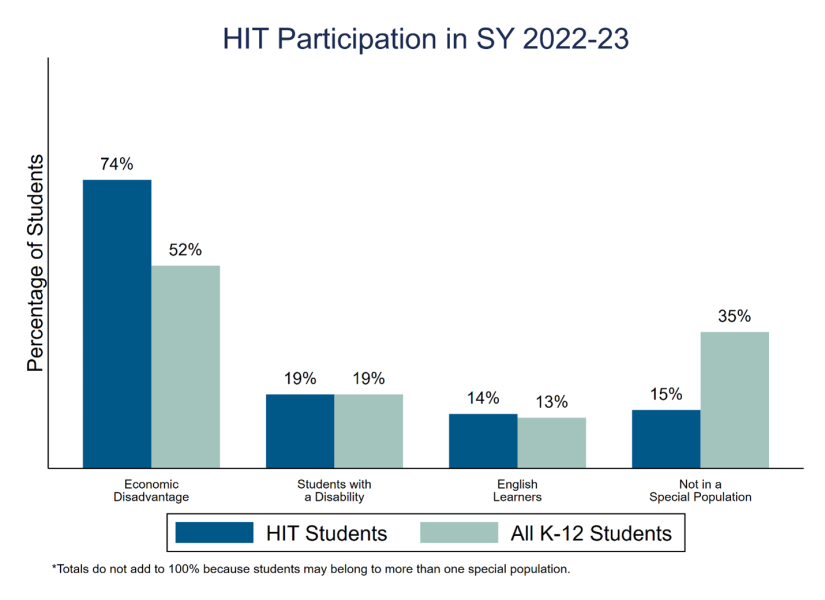The Office of the State Superintendent of Education (OSSE) has been leading a number of coronavirus (COVID-19) recovery programs and one of the most significant investments is our High-Impact Tutoring (HIT) initiative. OSSE is providing grants to scale evidence-based tutoring programs. We know that students who are economically disadvantaged were negatively impacted by the pandemic and that HIT is widely accepted as one of the most effective evidence-based tools for accelerating learning, particularly for those students who are farthest from opportunity. HIT resources are therefore concentrated in schools where at least 70 percent of the student body has been identified as economically disadvantaged
.
One of the data team’s jobs is tracking program performance. The first task is ensuring that the resources are going to the students who need them the most. The graph below shows that OSSE’s initial efforts during the 2022-23 school year were successful in reaching that target, serving more students experiencing economic disadvantage than expected based on their proportion of all K-12 students in the District. Students experiencing economic disadvantage made up 74 percent of HIT participants while they make up only 52 percent of the overall student population.

Why focus on students with economic disadvantage? Since students returned to in-person learning in fall 2021, the talk across the nation has been how to make up for missed learning opportunities during the pandemic, especially for the most vulnerable learners. Students in the District are no exception to these national trends. According to data from statewide testing in spring 2022, fewer students in all groups showed proficiency in both math and English language arts (ELA) compared to spring 2019. Students in special populations in the District (students with disabilities, English learners and students who are economically disadvantaged) achieved proficiency at lower rates than their peers in school year 2018-19, the last time tests were fully administered. Even though all groups showed decreases in proficiency rates during the 2021-22 school year, the decrease in proficiency among students in special populations means students who were struggling to catch up before the pandemic are in danger of falling further behind. Students identified as economically disadvantaged showed larger decreases in both math and ELA than their peers who are not at-risk.
Concentrating high-impact tutoring at schools with high proportions of students experiencing economic disadvantage ensures that those who most need support will have access to it. We are excited to watch these students grow!
Learn More
You can visit OSSE’s Investments in Recovery & Restoration website to learn more about OSSE’s response to the COVID-19 Pandemic. If you want to learn more about student growth, we have two posts for you to read, one explaining growth metrics for ELA and math and one explaining how we track the progress of our English language learners toward proficiency.


